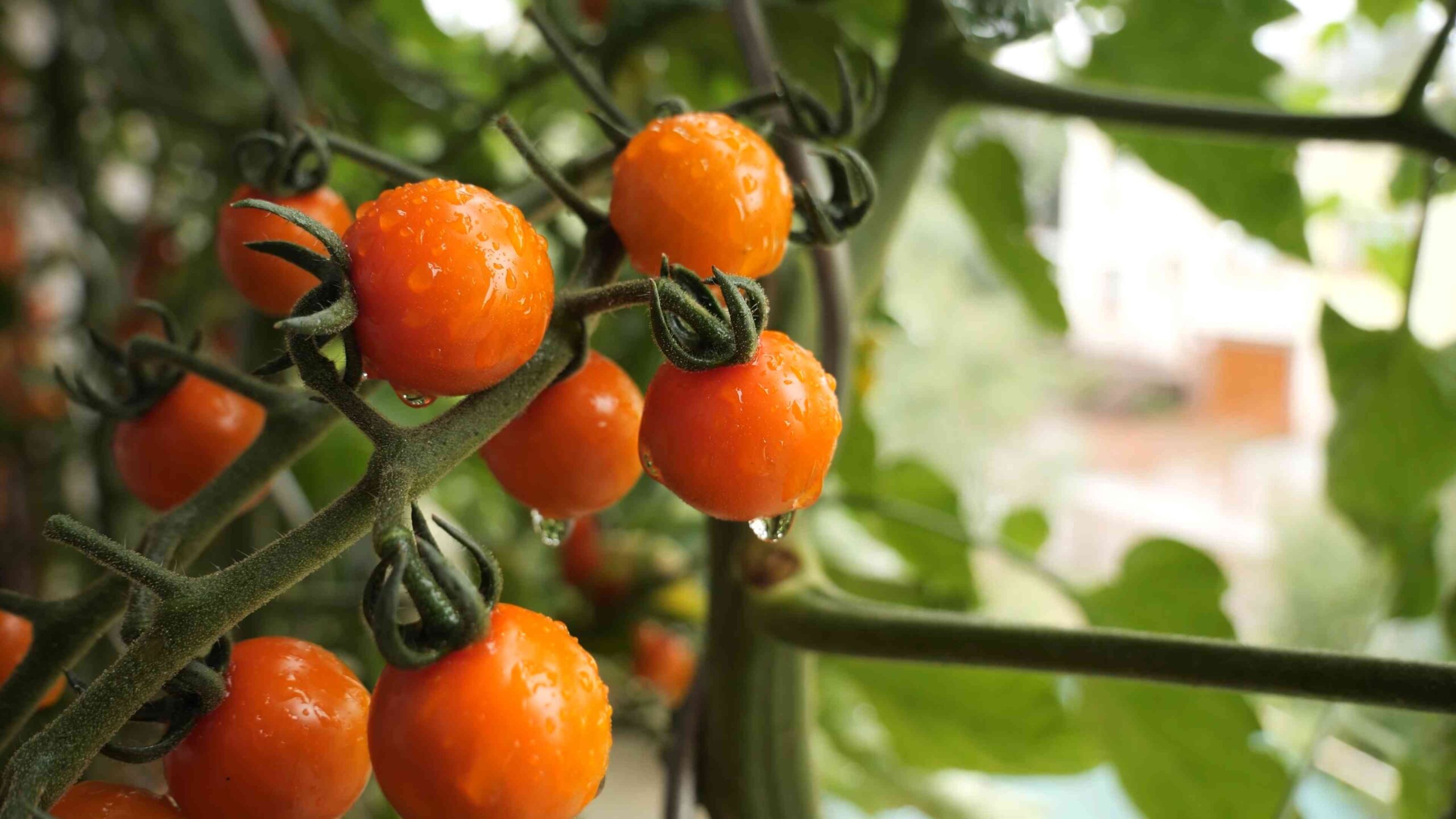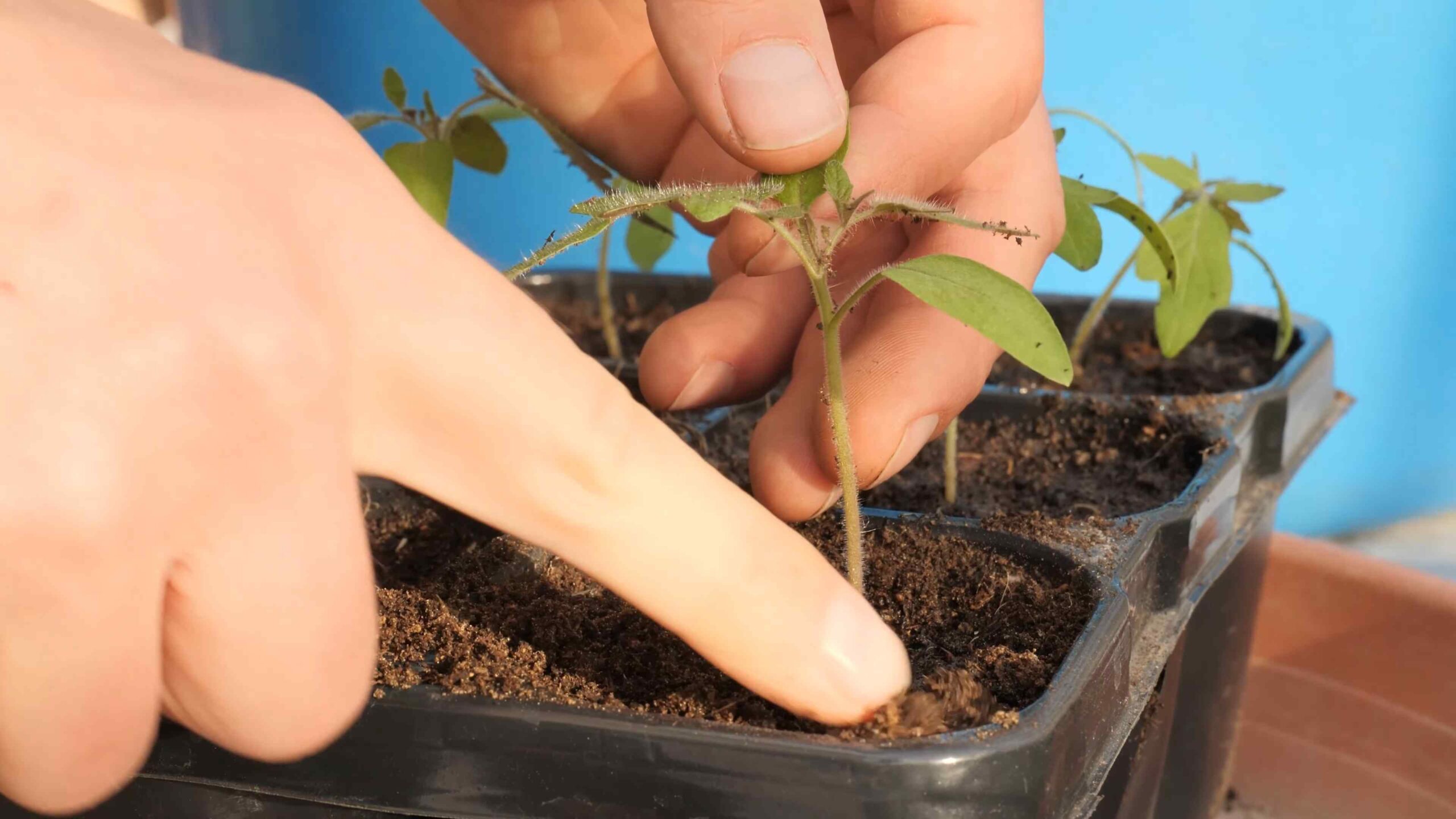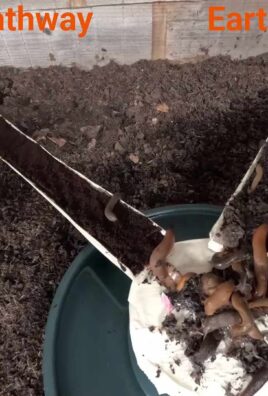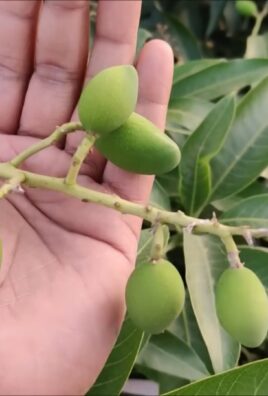Grow tomatoes at home, even if you think you have a black thumb! Let’s face it, there’s nothing quite like the taste of a sun-ripened, juicy tomato fresh from your own garden. Forget those bland, store-bought imitations – we’re talking about unlocking the vibrant flavors and incredible satisfaction that comes with nurturing your own delicious crop.
For centuries, cultivating tomatoes has been a cherished tradition in cultures around the world. From the ancient Aztecs who first domesticated this vibrant fruit to the Italian Nonnas who perfected their secret sauce recipes, the tomato holds a special place in our culinary history. But you don’t need generations of experience to enjoy the fruits (or vegetables!) of your labor.
In this article, I’m going to share some simple, yet incredibly effective, DIY tricks and hacks that will empower you to grow tomatoes at home successfully, regardless of your space or experience level. Whether you have a sprawling backyard or just a sunny balcony, these tips will help you overcome common challenges, maximize your yield, and enjoy a bountiful harvest of homegrown goodness. So, grab your gardening gloves, and let’s get started!

Growing Tomatoes at Home: A Beginner’s Guide
Okay, so you want to grow tomatoes at home? Awesome! There’s nothing quite like biting into a sun-ripened, homegrown tomato. Trust me, it’s worth the effort. This guide will walk you through everything you need to know, from choosing the right variety to harvesting your delicious bounty. Let’s get started!
Choosing Your Tomato Variety
Before you even think about planting, you need to decide what kind of tomatoes you want. There are literally hundreds of varieties, so it can be a little overwhelming. Here’s a breakdown to help you choose:
* Determinate vs. Indeterminate: This is the big one. Determinate tomatoes grow to a certain size and then produce all their fruit at once, making them great for canning. Indeterminate tomatoes keep growing and producing fruit throughout the season. I personally prefer indeterminate because I love having fresh tomatoes all summer long.
* Size and Shape: Do you want big beefsteak tomatoes for sandwiches? Cherry tomatoes for snacking? Plum tomatoes for sauce? Think about how you plan to use your tomatoes and choose accordingly.
* Disease Resistance: Look for varieties that are resistant to common tomato diseases like Fusarium wilt (F), Verticillium wilt (V), and Tomato Mosaic Virus (T). These are often indicated on the seed packet or plant label with letters like “VFNT.”
* Climate: Consider your local climate and choose varieties that are known to thrive in your area. Your local garden center can give you great recommendations.
Some popular and reliable varieties include:
* ‘Early Girl’: A classic early-season tomato that’s reliable and produces good-sized fruit.
* ‘Roma’: A determinate variety perfect for making tomato sauce.
* ‘Cherry Tomatoes’: So many options! ‘Sungold’ is a super sweet and popular choice.
* ‘Beefsteak’: For those massive, juicy sandwich tomatoes.
Starting from Seed vs. Buying Seedlings
You have two main options for getting your tomato plants: starting from seed or buying seedlings from a nursery.
* Starting from Seed: This gives you more control over the variety and can be more cost-effective. However, it requires more time and effort. You’ll need to start your seeds indoors about 6-8 weeks before the last expected frost.
* Buying Seedlings: This is the easier option, especially for beginners. You can find a wide variety of tomato seedlings at most garden centers in the spring. Just make sure to choose healthy-looking plants with sturdy stems and no signs of disease.
I’ve done both, and honestly, buying seedlings is often the way to go if you’re short on time or space. But if you’re feeling ambitious, starting from seed can be really rewarding!
Step-by-Step Guide: Planting Your Tomatoes
Okay, let’s get down to the nitty-gritty of planting!
1. Choose the Right Location: Tomatoes need at least 6-8 hours of sunlight per day. Choose a spot in your garden that gets plenty of sun. Also, make sure the soil is well-draining. Tomatoes don’t like to sit in soggy soil.
2. Prepare the Soil: This is crucial! Tomatoes are heavy feeders, so you need to enrich the soil with plenty of organic matter.
* Amend the Soil: Dig in compost, aged manure, or other organic matter to improve drainage and fertility. I usually add a generous amount of compost to my tomato beds.
* Check the pH: Tomatoes prefer a slightly acidic soil pH of around 6.0-6.8. You can test your soil pH with a soil testing kit from your local garden center. If your soil is too alkaline, you can amend it with sulfur.
3. Planting Seedlings: If you’re using seedlings, follow these steps:
* Dig a Hole: Dig a hole that’s deep enough to bury the bottom third of the tomato plant’s stem. This might seem weird, but tomatoes can actually grow roots from their stems, which will make the plant stronger and more productive.
* Remove Lower Leaves: Gently remove the leaves from the bottom third of the stem.
* Plant Deep: Place the seedling in the hole and bury the stem up to the first set of leaves.
* Water Thoroughly: Water the plant well after planting.
* Space Properly: Space your tomato plants about 2-3 feet apart, depending on the variety. Determinate varieties can be closer together than indeterminate varieties.
4. Planting Seeds (If Starting from Seed):
* Start Indoors: Sow seeds indoors 6-8 weeks before the last expected frost.
* Use Seed Starting Mix: Use a seed starting mix, not regular potting soil.
* Plant Shallowly: Plant seeds about 1/4 inch deep.
* Keep Moist: Keep the soil moist but not soggy.
* Provide Light: Provide plenty of light, either with a grow light or by placing the seedlings in a sunny window.
* Harden Off: Before transplanting seedlings outdoors, you need to “harden them off” by gradually exposing them to outdoor conditions for a week or two. Start by placing them outside for a few hours each day and gradually increase the amount of time they spend outdoors.
5. Staking or Caging: This is essential, especially for indeterminate varieties. Tomatoes can get really heavy with fruit, and staking or caging will help support the plants and prevent them from falling over.
* Staking: Drive a sturdy stake into the ground near the plant and tie the stem to the stake with soft twine or plant ties.
* Caging: Place a tomato cage around the plant when you plant it. Make sure the cage is tall enough to accommodate the mature size of the plant. I prefer cages because they provide more support than stakes.
6. Mulching: Mulching helps retain moisture in the soil, suppress weeds, and regulate soil temperature.
* Use Organic Mulch: Use organic mulch such as straw, hay, or wood chips.
* Apply After Planting: Apply a layer of mulch around the base of the plants after planting.
Caring for Your Tomato Plants
Once your tomatoes are planted, you need to provide them with proper care to ensure a bountiful harvest.
1. Watering: Tomatoes need consistent watering, especially during hot, dry weather.
* Water Deeply: Water deeply and infrequently, rather than shallowly and frequently. This encourages deep root growth.
* Water at the Base: Water at the base of the plant to avoid wetting the leaves, which can lead to disease.
* Check Soil Moisture: Check the soil moisture regularly and water when the top inch of soil feels dry.
2. Fertilizing: Tomatoes are heavy feeders and need regular fertilization.
* Use Tomato Fertilizer: Use a fertilizer specifically formulated for tomatoes.
* Follow Instructions: Follow the instructions on the fertilizer label.
* Fertilize Regularly: Fertilize every 2-3 weeks throughout the growing season.
3. Pruning: Pruning can help improve air circulation and fruit production.
* Remove Suckers: Remove the “suckers” that grow between the main stem and the branches. These suckers will steal energy from the plant and reduce fruit production.
* Prune Lower Leaves: Prune the lower leaves that are touching the ground to improve air circulation and prevent disease.
4. Pest and Disease Control: Tomatoes are susceptible to a variety of pests and diseases.
* Inspect Regularly: Inspect your plants regularly for signs of pests or diseases.
* Use Organic Controls: Use organic pest and disease control methods whenever possible.
* Common Pests: Common tomato pests include aphids, tomato hornworms, and whiteflies.
* Common Diseases: Common tomato diseases include early blight, late blight, and blossom end rot. Blossom end rot is often caused by calcium deficiency, which can be addressed by adding calcium to the soil or using a calcium-rich fertilizer.
Harvesting Your Tomatoes
The best part! Harvesting your own tomatoes is so rewarding.
1. Wait for Ripeness: Wait until the tomatoes are fully ripe before harvesting. They should be a deep, rich color and slightly soft to the touch.
2. Gently Twist: Gently twist the tomato off the vine.
3. Enjoy! Enjoy your delicious, homegrown tomatoes!
Troubleshooting Common Tomato Problems
Even with the best care, you might encounter some problems along the way. Here are a few common issues and how to address them:
* Blossom End Rot: As mentioned earlier, this is usually caused by calcium deficiency. Make sure your soil has enough calcium and water

Conclusion
So, there you have it! Growing tomatoes at home is not only achievable, but it’s also incredibly rewarding. From the vibrant colors to the unmatched flavor, homegrown tomatoes offer an experience that store-bought varieties simply can’t replicate. We’ve walked you through the essential steps, from selecting the right variety for your space to nurturing your plants for optimal growth.
But why is this DIY trick a must-try? Beyond the obvious benefit of having fresh, delicious tomatoes readily available, growing your own offers a deeper connection to your food. You control the entire process, ensuring your tomatoes are free from harmful pesticides and grown with love. Plus, there’s a certain satisfaction that comes from watching a tiny seed transform into a bountiful plant, laden with juicy, red fruit. It’s a tangible accomplishment that connects you to the natural world.
This method is a game-changer for anyone looking to enjoy the taste of summer all season long.
Don’t be afraid to experiment! Consider growing different varieties of tomatoes to discover your favorites. Cherry tomatoes are perfect for snacking, while Roma tomatoes are ideal for sauces. Heirloom varieties offer unique flavors and colors, adding a touch of elegance to your garden and your plate. You can also try companion planting, pairing your tomatoes with herbs like basil or marigolds to deter pests and enhance growth. If you’re short on space, consider growing tomatoes in containers on your balcony or patio. There are even dwarf varieties specifically bred for container gardening.
We encourage you to embrace the joy of growing tomatoes at home. It’s a simple yet profound way to connect with nature, nourish your body, and savor the flavors of summer. Give it a try, and don’t hesitate to share your experiences with us! We’d love to hear about your successes, your challenges, and the delicious dishes you create with your homegrown bounty. Share your photos and stories in the comments below, and let’s build a community of tomato-loving gardeners!
Frequently Asked Questions (FAQs)
What are the best tomato varieties to grow at home?
The “best” tomato variety depends largely on your personal preferences and growing conditions. For beginners, determinate varieties like Roma or Celebrity are a good choice as they are more compact and produce a concentrated harvest. Indeterminate varieties like Better Boy or cherry tomatoes offer a continuous harvest throughout the season but require more support and pruning. Consider your climate and space limitations when making your selection. If you have limited space, bush or dwarf varieties are ideal for containers. If you live in a hot climate, heat-tolerant varieties are a must. Don’t be afraid to experiment with different heirloom varieties to discover unique flavors and colors.
How much sunlight do tomatoes need?
Tomatoes are sun-loving plants and require at least 6-8 hours of direct sunlight per day to thrive. Insufficient sunlight can lead to leggy growth, reduced fruit production, and bland-tasting tomatoes. Choose a location in your garden that receives ample sunlight throughout the day. If you’re growing tomatoes in containers, make sure to position them in a sunny spot. If you live in a particularly hot climate, some afternoon shade may be beneficial to prevent sunscald.
What kind of soil is best for growing tomatoes?
Tomatoes prefer well-draining soil that is rich in organic matter. Amend your garden soil with compost or aged manure to improve its fertility and drainage. A slightly acidic soil pH of 6.0-6.8 is ideal for tomato growth. You can test your soil pH with a home testing kit or send a sample to your local agricultural extension office for analysis. If your soil is heavy clay, consider growing tomatoes in raised beds or containers filled with a high-quality potting mix.
How often should I water my tomato plants?
Water your tomato plants deeply and regularly, especially during hot, dry weather. Aim to keep the soil consistently moist but not waterlogged. Water at the base of the plant to avoid wetting the foliage, which can increase the risk of fungal diseases. A good rule of thumb is to water when the top inch of soil feels dry to the touch. Mulching around your tomato plants can help retain moisture and suppress weeds.
When should I fertilize my tomato plants?
Fertilize your tomato plants regularly throughout the growing season to provide them with the nutrients they need to produce abundant fruit. Use a balanced fertilizer specifically formulated for tomatoes, following the instructions on the package. Start fertilizing when the plants begin to set fruit and continue every 2-3 weeks. Avoid over-fertilizing, as this can lead to excessive foliage growth and reduced fruit production.
How do I prevent common tomato problems like blossom end rot?
Blossom end rot is a common problem in tomatoes caused by calcium deficiency. To prevent blossom end rot, ensure your soil is rich in calcium and that your plants receive consistent watering. You can add calcium to the soil by incorporating bone meal or crushed eggshells. Avoid letting the soil dry out completely, as this can hinder calcium uptake. Other common tomato problems include fungal diseases like early blight and septoria leaf spot. Prevent these diseases by providing good air circulation, avoiding overhead watering, and removing any infected leaves promptly.
How do I prune my tomato plants?
Pruning is essential for indeterminate tomato varieties to promote air circulation, improve fruit production, and prevent diseases. Remove suckers (the small shoots that grow between the main stem and the branches) regularly to encourage the plant to focus its energy on fruit production. You can also prune the lower leaves of the plant to improve air circulation and prevent soil-borne diseases from splashing onto the foliage. Determinate tomato varieties generally do not require as much pruning.
When is the best time to harvest tomatoes?
Tomatoes are ready to harvest when they are fully colored, slightly soft to the touch, and easily detach from the vine. The exact color will depend on the variety. Harvest tomatoes in the morning when they are at their peak flavor. Gently twist or cut the tomato from the vine, leaving a small piece of stem attached. Store ripe tomatoes at room temperature for the best flavor. Avoid refrigerating them, as this can diminish their taste and texture.
Can I grow tomatoes indoors?
Yes, you can grow tomatoes indoors, but it requires providing them with adequate light and warmth. Choose a sunny window that receives at least 6-8 hours of direct sunlight per day. You may also need to supplement with grow lights, especially during the winter months. Select dwarf or bush varieties that are well-suited for container gardening. Ensure your containers have good drainage and use a high-quality potting mix. Pollinate the flowers manually by gently shaking the plants or using a small brush to transfer pollen from one flower to another.





Leave a Comment